It is said that everything is bigger in Texas. This is proved true as Texas houses three of the thirteen Presidential Libraries run by the National Archives and Records Administration (NARA) are located in the Lone Star state. These libraries are unique as they are the only presidential libraries to be located on college campuses. The LBJ library was dedicated on May 22, 1971 at the University of Texas at Austin. The George H.W. Bush library was dedicated on November 7, 1997 at Texas A&M University in College Station and the George W. Bush library was dedicated on April 25, 2013 at Southern Methodist University.
George W. Bush, the 43rd President of the United States
Before you enter the exhibits, you are greeted by President and Mrs. Bush on a 20 foot high, 360 degree video wall. A brief film opens your visit with both George and Laura discussing the events that defined their time in the White House. Your self-guided tour begins with a look at the President’s domestic policy and ends as you turn a corner to see a 22-foot piece of steel from the World Trade Center. The emotional ‘Nation under Attack’ portion of the tour begins. The steel recovered from the towers is surrounded by videos about the devastating terrorist attack on America along with the names of those killed on 911. You continue through exhibits on the defining moments of Bush’s term in office, the War on Terror and Hurricane Katrina.
In the full-scale replica of Bush’s Oval Office, visitors can have their picture taken behind the President’s desk. There are three noteworthy sculptures in the Oval Office, a Remington horse and busts of both Abraham Lincoln and Winston Churchill, both men who Bush greatly admires. You can also view the former Conference Room and Command Room (Situation Room) which were saved during the White House renovation and reconstructed especially for the library. In the Decision Points Theater, visitors can view videos and choose to follow the decision making process from one of four decision points during the Bush administration: the invasion of Iraq, the “surge” in Iraq, the financial crisis, and Hurricane Katrina. In the orientation film, Bush states that he did not want to become a war-time President. Unfortunately, that was exactly what he became.As the most recent addition to the growing presidential libraries, the size of the electronic records is immense at eighty terabytes and seventy million pages of paper records. These records include Bush’s presidential and gubernatorial records. The library also holds the largest collection of digital photographs of any of the presidential libraries. These record holdings will most likely be short lived with the Obama Library in the planning stages.
The docents, who all wear a small “W” on their lapels, were helpful and knowledgeable. Parking is easily accessible across from the entrance for a cost of five dollars.
https://www.georgewbushlibrary.smu.edu/
George Herbert Walker Bush, the 41st President of the United States
Your self guided tour then begins with a short film of introduction from President and Mrs. Bush which provides an overview of their service to the county. Moving further in the exhibits you learn about the Bush and Pierce (Barbara’s) family histories discovering when, where and how George and Barbara met and started their family. Then you learn about George’s military career, his entry into the oil business and his first steps into politics. Astonished at the amount of documents and mementos that filled the halls, I inquired how they had so many items from their life. “Barbara saved everything.” the docent explained. In fact, the library has a number of rooms filled with items that Mrs. Bush kept from the family, George’s military and political career and the careers of each of their sons. The archive contains more than forty-four million pages of documents related to the many offices that Bush had held during his career as well as some two million photographs.
In the replica of the Bush Oval office, you can have your picture taken behind the President’s desk. The notable piece that adorns the Oval office is a Russian three-masted schooner that was a gift from Mikhail Gorbachev. You walk through Bush’s entry into politics, his term as a Texas Congressman, leadership of the Republican Party, his work in China, as the US Ambassador to the UN, the Director of the CIA and Vice President to Ronald Reagan. As in the Kennedy and Reagan Libraries, there is a piece of the Berlin Wall on display that is a reminder of Bush’s work with President Reagan to ‘tear down that wall”.The library is located on the campus of Texas A&M University, the largest land holding university in the world. The location was selected on the recommendation of a Bush friend and strong lobbying of the cities of Bryan and College Station, Texas. The library volunteer docents at 41 are as warm and inviting as is the library itself. At the end of the tour, you may have a letter printed for yourself on a selection of topics signed by autopen by either George or Barbara as a keepsake. Free parking is available in the front of the library in Lot 41.
Lyndon Baines Johnson, 36th President of the United States
Johnson was born poor and began his working life as a teacher in the poor section of Texas before he considered public service and politics. His early life shaped his entire “Great Society” agenda when he began his political career. He never forgot where he came from or those who needed his help. He was a tireless worker and accomplished a great many legislative feats, including the Voting Rights Act, the Civil Rights Act and instituted Medicare. In fact, he presented both President Harry Truman and Mrs. Truman with the first two Medicare cards. He was a political wheeler dealer and it was not uncommon to receive the “Johnson treatment” when he wanted something done. Vietnam was Johnson’s eventual undoing because as it continued he realized there was no way to get out of the conflict. He dealt with continuous protesters with “all the way, LBJ, how many kids did you kill today”. There were also health concerns for him. He had suffered a heart attack in 1955 and the stress of the job had taken its toll on him, he died just four years after he left office.
The ten-story travertine edifice was designed by award-winning architect Gordon Bunshaft and is representative of the man that Johnson was, simple, cunning and mercurial. It was Johnson who began recording all telephone conversations at the White House in 1963. These recordings would lead to President Nixon’s demise but Johnson knew of the importance of record keeping. To be able to listen to the conversation he had with the political leaders of the day gives one insight into just how Washington works. His archive contains over forty-five million pages of historical documents, six hundred fifty thousand photographs and five thousand hours of recordings from President Johnson’s political career contained on the four floors for the building.A volunteer docent, Katy greeted me at the ticket desk and handed me a map for the library. Telling her how impressed I was with the library, she explained her role in the function of the library and that she usually handled middle school tours. As I toured the museum, she found me at several stops along the way to see if I had questions about any of the materials. I hoped I proved more attentive than the school children.
The library sits on the Campus of the University of Texas at Austin. Free parking is available in the front of the library in Lot 38.
Yes, everything is truly bigger in Texas, whether it is the buildings, personalities or ambition. These three Texan Presidents proved it as they were and are larger than life.

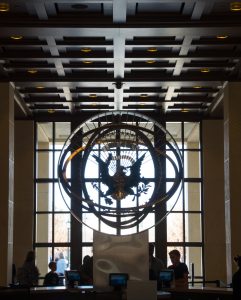
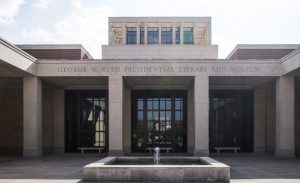
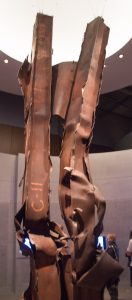
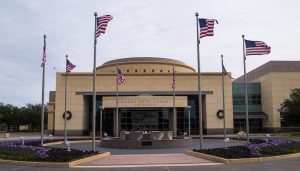
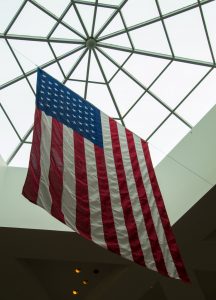
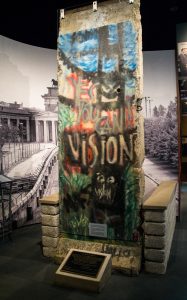
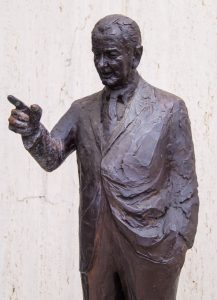
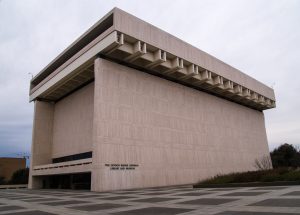

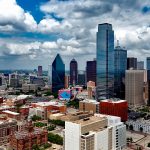




Leave a Reply